Spooky
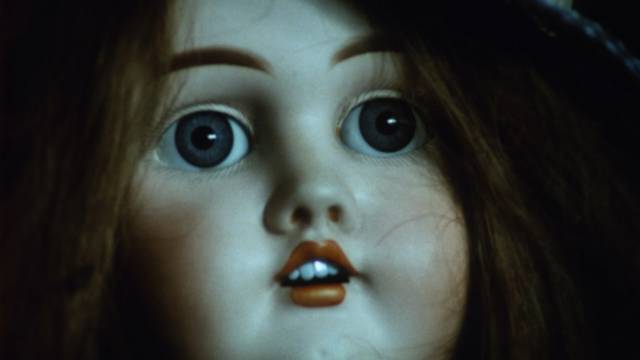
Sometimes I get a reminder that I’m dumber than I think. Recently, a week after I had a heart attack[1], I watched no less than five creepy movies over a couple of days. These were generally subtle horror films, but I did discover that jump scares are not the best thing when you’re recuperating from a heart attack.
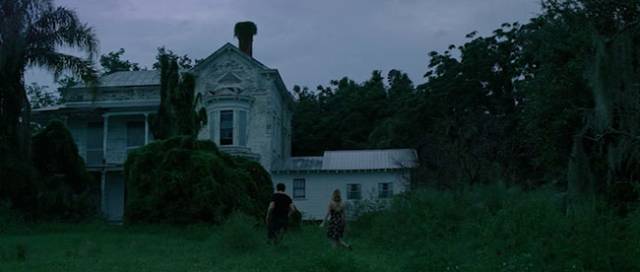
After Midnight/The Battery
(Jeremy Gardner & Christian Stella, 2019/2012)
I was drawn to this Arrow release of two low-budget independent horror movies for a not entirely rational reason: a couple of years ago, a similar two-disk release from Arrow introduced me to a pair of exceptional filmmakers, Justin Benson and Aaron Moorhead, and here not only were there another directing team working in the genre, but the more recent of the films in the set had Benson and Moorhead among the producers, with Benson also appearing in a supporting role.
Jeremy Gardner and Christian Stella’s work is quite different from Benson and Moorhead’s, not least in being more obviously low-budget, less polished and conceived on a smaller scale. These two movies are essentially indie character studies with horror elements rather than evocations of Lovecraftian cosmic dread. Tailored to limited resources, they rely more on writing and performance than action and horror set-pieces. In other words, rather than striving for something beyond their grasp, they play to the filmmakers’ obvious strengths within their material constraints.
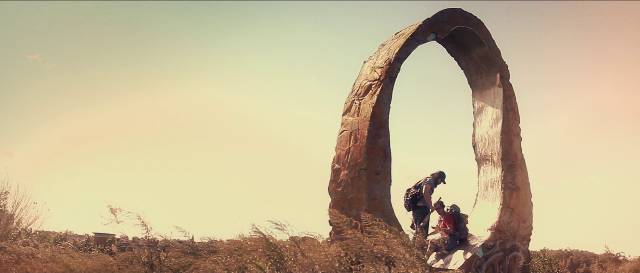
The earlier of the two, The Battery (2012), written and directed by Gardner and photographed by Stella, makes use of familiar horror tropes to create a background for the story of two men who get on one another’s nerves but are forced to depend on each other for survival. Ben (Gardner) and Mickey (Adam Cronheim) were members of a baseball team when the zombie apocalypse arrived and now wander around New England just trying to remain alive. Ben is the more pragmatic of the two, while Mickey is unable to fight the undead – he tries to avoid facing the reality of the situation by wearing headphones and listening to music all the time. Ben is getting very tired of being the one who has to watch both their backs.
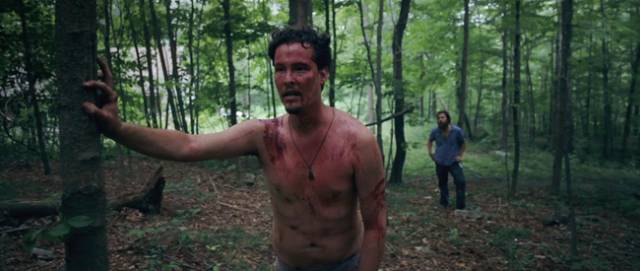
They keep to rural woodlands, occasionally encountering the living dead (mindless, shambling zombies in the Romero mould rather than a fast-moving horde); they stop for a night or two at an abandoned house where Ben captures a zombie and pushes it into Mickey’s bedroom, forcing his companion to finally fight for himself; they find a working car, which enables them to go further more quickly, even though they have no idea where to go; and they find some walkie-talkies over which they hear chatter between other survivors.
These others, however, aren’t very welcoming, warning them away. One of them is a woman named Annie, and Mickey becomes obsessed with her, trying to get a response day after day until she finally tells him that it’s dangerous where she is and he should just forget her. Mickey’s obsession inevitably leads to disaster when he and Ben encounter another vehicle on a lonely road and Mickey realizes one of the two people inside is Annie (Alana O’Brien). To prevent the pair following her back to whatever community she belongs to (we’ve all seen enough zombie shows to know that this is not a good place), she shoots Ben in the leg and throws their car keys into a ditch.
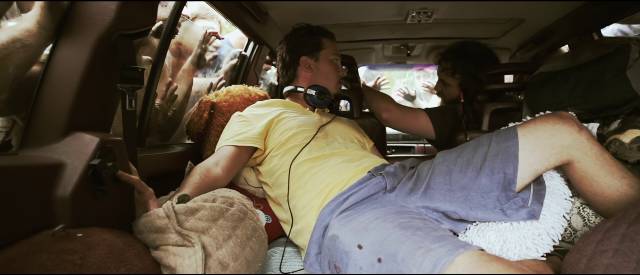
The entire end section of the movie takes place inside their cramped station wagon, surrounded by shambling zombies who are too weak and unfocused to get in. Mickey takes blankets and covers all the windows; the world has shrunk to almost nothing and apart from the endless moaning of the living dead Ben and Mickey have only each other. Eating out of a dwindling supply of cans, drinking whisky, pissing in a bottle, and stuck with each other’s steadily increasing stench, they finally become friends and Mickey gains the courage to face what’s outside in an effort to save them both.
Gardner does an excellent job of suggesting the global catastrophe underway outside the frame of the story and he and Cronheim create convincing characters who may not have chosen to be friends but navigate the friction and occasional pleasures of companionship under extraordinary stress.
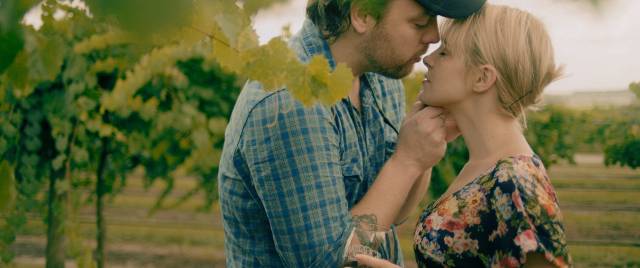
Gardner and Stella co-directed a second feature in 2015, a comedy called Ted Montana Will Survive! (which I haven’t seen), before returning to horror with After Midnight in 2019. Once again, the focus is on character, while the film is less tied to familiar horror tropes. It’s a trickier prospect, with the monster both a physical reality and a more obvious metaphor. Stranger and more mysterious than zombies, this creature is never explained on a narrative level, although it has obvious psychological significance.
Gardner here plays Hank, an unambitious guy who owns a bar in a small Florida town and lives in a rambling old house in the country. He’s coming apart because his longtime partner Abby (Brea Grant) has taken off, leaving a brief note stuck on a kitchen cabinet. We see the beginnings of their relationship ten years earlier when he first brought her to the house on her birthday; whether these scenes are actual flashbacks or Hank’s idealized memories isn’t entirely clear, but their rosy glow underlines the pain Hank feels in the present, his fear of being abandoned. Angry, he drinks a lot and keeps leaving voice messages on Abby’s phone.
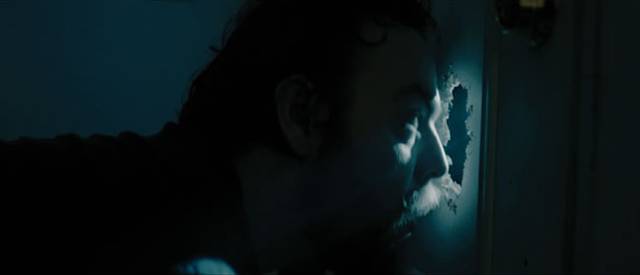
And at night, something out there in the dark keeps trying to break into the house, leaving deep gouges in the front door. Hank pushes a couch against the door and sleeps on it with a shotgun. His friend Shane (Justin Benson), a local deputy, suggests it’s just a bear, that there’s always a logical explanation. Or maybe, as others suggest, it’s some kind of alien. What it really seems to be is Hank’s fear and anger given material form, something internal manifest externally and trying to tear his life apart.
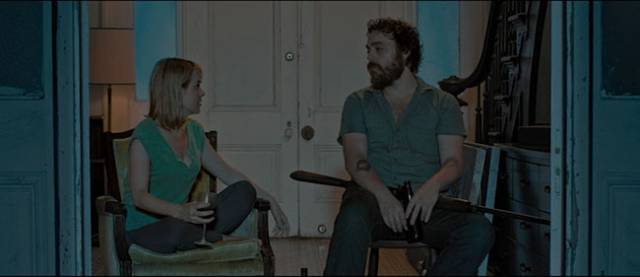
While I found the monster not entirely satisfying as a narrative device, the film works very well as a study in the fraught evolution of a relationship. When Abby returns on the eve of her birthday, Gardner and Stella take a risk with a single fourteen-minute shot of her and Hank sitting by the open door, facing the night and the possible reappearance of the monster, as she tells him why she left, what her feelings and hopes are, and her dissatisfaction with the way their lives had settled into a dull routine which had all but obliterated the emotional excitement with which the relationship had begun. It becomes clear that Hank for his part had clung to this routine out of fear that things might change; in trying not to lose what they had started with, he had come close to killing what he was hanging on to.
There’s always a risk in moments like this that the scene might come across as an acting exercise, nothing more than filmed theatre, but the writing is nuanced and the performances embody multiple levels of emotion. Grant in particular is excellent; Gardner gets his opportunity in the following sequence at the small party for Abby’s birthday, during which he finally opens up about his own feelings and fears and expresses at last a willingness to risk moving on in their relationship. But first, of course, he has to defeat the monster which embodies all the old fears…
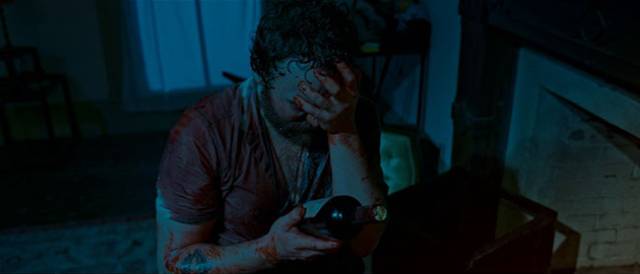
It’s a commonplace that monsters are often metaphors, but the best monsters also exist as plausible material elements of a narrative. I’m not sure that this is true in After Midnight. It has a grafted on quality. For me, the movie works best as an indie romantic drama about a couple who slip in and out of sync and have to risk losing each other in order to grow emotionally and psychologically. As in The Battery, the attention remains primarily on the characters and performances, with the genre elements serving as a supporting framework.
Although The Battery shows its low-budget origins (it was reputedly made for $6000), both films look fine on Arrow’s two-disk set. Each has a commentary, plus multiple featurettes, with The Battery also getting a feature-length making-of.
*
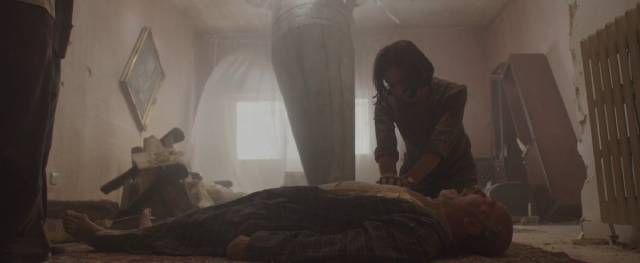
Under the Shadow (Babak Anvari, 2016)
In his first feature, writer-director Babak Anvari blends realism and metaphor to potent effect. Born in post-revolution Iran during the protracted Iran-Iraq war which lasted most of the 1980s, Anvari emigrated to England as a child and began making short films in his early twenties. For his first feature, he drew on his roots; Under the Shadow (2016) is set in Tehran during the war, a city under regular bombardment and oppressed by the rigid strictures of the newly forged Islamic state. While the narrative has familiar elements, the specificity of the setting makes everything fresh.
In the opening scene, we’re introduced to Shideh (Narges Rashidi), a middle class wife and mother whose studies to become a doctor were interrupted by the revolution. Now, years later, she is making a plea to be allowed back into university. A smug administrator points out that during the chaos of the revolution she unwisely involved herself with some leftist groups; tainted, she has forfeited the chance of finishing her education. Apart from the political issue, it seems likely that the fact that she’s a woman also plays a part. As he delivers his verdict, we see a building exploding in the distance through the window.
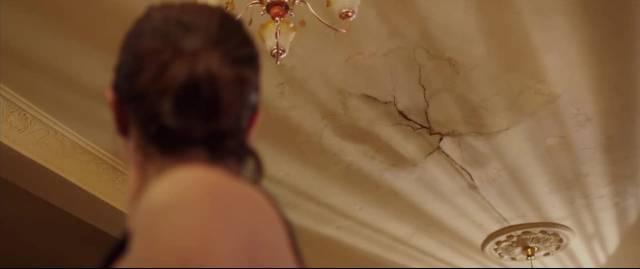
Back home, Shideh collects her young daughter Dorsa (Avin Manshadi) from a neighbour. When her husband returns and hears her news, he simply says “perhaps it’s for the best”. Iraj (Bobby Naderi), a doctor himself, seems satisfied with having her remain a wife and mother. In her frustration, she throws out all her text books except for one which had been a gift from her mother containing a proud and encouraging inscription about the life Shideh is no longer able to pursue.
Shortly after Iraj leaves for his annual service as a military doctor, the building is hit by a missile which crashes through the roof of the apartment upstairs without exploding. The old man who lives up there suffers a heart attack and neighbours plead with Shideh to help him, but administering CPR doesn’t revive him. Fear, frustration and the chaos of the war open a door to something else; as the building gradually empties out, with people fleeing the city, disturbing things begin to happen. A neighbour asserts that the missile brought with it Djinn, malevolent spirits looking for vulnerable people to torment. With everything piling up to shatter Shideh’s life, she’s a target even though she doesn’t believe in these mythical entities.
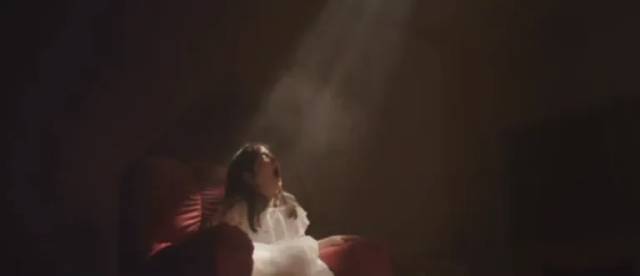
Things become increasingly creepy – Dorsa talks to unseen figures; her favourite doll disappears; Shideh wakes to find Iraj in bed beside her, except it’s not him; a creature of some kind squirms up through the cracks in the ceiling and disappears. But Anvari never loses sight of the real world in which all this is occurring. After one terrifying encounter, Shideh grabs Dorsa and flees into the night, only to run into a patrol of the morality police who arrest her for being immodestly dressed. Threatened with prison, she is finally let off with a warning, given a hijab to wear as she takes Dorsa home, a symbol of the constraints under which she’s expected to live.
The Djinn become bolder in their attacks and even as Shideh drives away from the abandoned building with Dorsa, it’s obvious that the spirits remain attached to her, that escape from what is making her life hell is not really an option.
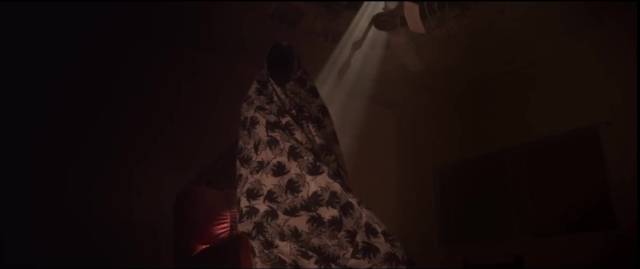
Anvari’s use of social realism keeps the horror anchored while the supernatural manifestations heighten the psychological stresses Shideh experiences under shrunken prospects imposed by the revolutionary government. The new state insists that her world is limited to the middle class home, but even there other limitations are imposed – she exercises to a video tape of a Jane Fonda routine, but even that is forbidden; in fact the VCR itself is against the rules. The horror works both as narrative device and metaphor, with Anvari skilfully blending realistic and fantasy elements into a potent whole, greatly aided by excellent performances, particularly from Rashidi and Manshadi.
A British-Jordanian co-production, Under the Shadow was shot in Amman, in Farsi, with a mixed British and Jordanian crew. The Second Sight Blu-ray has a strong image and includes a number of extras: Anvari’s 2011 short film Two & Two, which deals with the indoctrination of students by the oppressive government; plus interviews with Anvari, Rashidi, producers Lucan Toh and Oliver Roskill, and cinematographer Kit Fraser.
*
The other two films I watched are perhaps “old fashioned” in comparison, both belonging to the venerable tradition of the English ghost story as exemplified by M.R. James. Malevolent shades of the past impinge on the (period) present and pull innocents to their doom.
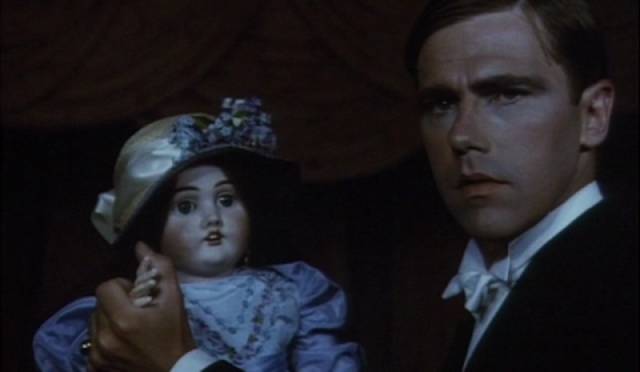
Ghost Story (Stephen Weeks, 1974)
I mentioned Stephen Weeks’ Ghost Story (1974) recently when writing about his first feature, I, Monster (1971). He had made that when he was just twenty-three, and this, his third feature, when he was twenty-six. Despite such a precocious start, his career never really gained traction. This was no doubt in part due to the rocky state of the British film industry in the 1970s, but also because there’s something quite eccentric about his work; Ghost Story seems adrift in time, even its setting in the 1920s or ’30s somehow dreamlike and oddly uncertain. This slightly feverish tone is amplified by the fact that it was shot mostly in India, giving its English setting an off-kilter atmosphere – it’s a recreation of a place and time which is both precise in many details yet never completely convincing. The film gives an idea of England’s past as if imagined by someone from a very different culture.
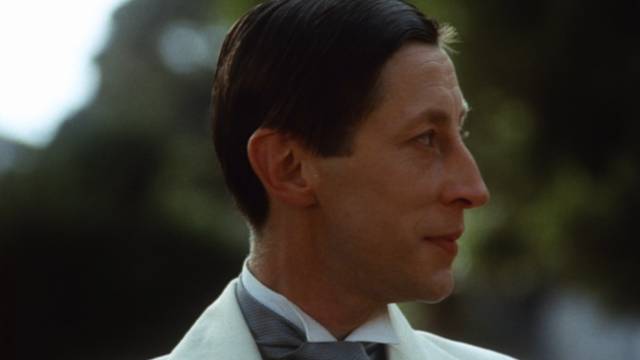
Three characters gather for a few days of relaxation and hunting at a gloomy country estate. Talbot (Larry Dann) and Duller (Vivian MacKerrell) have been invited by McFayden (Murray Melvin), even though they were merely acquaintances at university a few years earlier. While both McFayden and Duller have wealthy backgrounds, Talbot was a scholarship student towards whom Duller shows smug contempt. Talbot in turn tries too hard, overly talkative and effusive in his insecurity, eager to assert his right to be among his “betters”, though his strenuous efforts merely underline that he doesn’t really belong.
On arrival at the big old house, McFayden informs them that it’s reputedly haunted and his reasons for the invitation gradually emerge: Duller seems to have some scientific interest in the supernatural, while Talbot’s nervous sensitivity may make him open to unseen influences. As the weekend progresses, Duller comes up with nothing other than irritation, particularly directed at Talbot, while the latter does indeed become aware of ghostly occurrences. Uncertain of his own perceptions, he half suspects that the other two have brought him here as the butt of an elaborate joke and he keeps what he sees to himself.
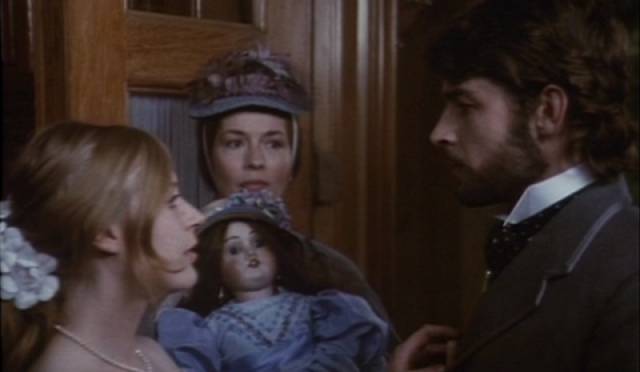
Those visions begin with a creepy Victorian doll which he finds in his room and which seems to move around by itself, watching him. The doll is a link to the house’s tragic past whose events unfold like a movie which only Talbot can see. The story is of a young woman named Sophy (Marianne Faithful) whose brother Robert (Leigh Lawson) has her sent to a nearby asylum as a way of banishing his own incestuous desire for her. Talbot becomes infatuated with the fragile, frightened woman, his own awakened desire drawing him inexorably towards a bad end.
Although we see Sophy’s story in detail – her growing madness as she’s imprisoned in the asylum, and the terrible plans of Doctor Borden (Anthony Bate) and his matron (Barbara Shelley) to burn the asylum and its inmates for the insurance, a plan which goes very wrong but allows Sophy to escape and return to the brother who betrayed her – there’s also a suggestion that this might all be the feverish imaginings of Talbot. When he walks down to the village one evening to have a beer at the local pub, the landlord is also played by Anthony Bate and the barmaid by Barbara Shelley, providing him with faces to put to the characters in the drama he witnesses.
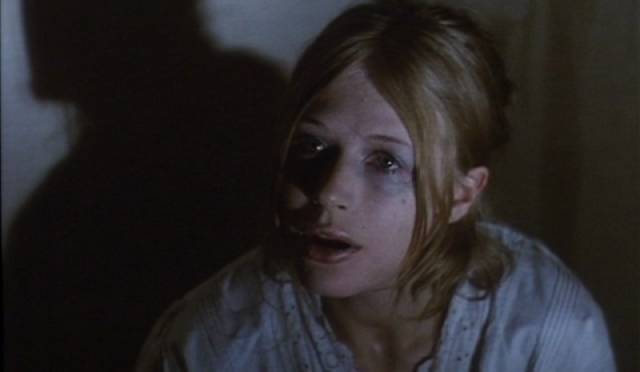
With its languid pace, Ghost Story doesn’t provide any overt scares, but it does build a dense, creepy atmosphere anchored by that sinister doll. Peter Hurst’s lush cinematography has a slightly gauzy, nostalgic quality which serves the story well, but what really sustains the slight narrative is the cast and the quality of the dialogue they are given. (The script is credited to Weeks in collaboration with journalist and novelist Philip Norman and historical novelist and children’s author Rosemary Sutcliff.) The three leads are excellent, each given distinct individual qualities; the overly eager Talbot is irritating, but the arrogant Duller provokes our sympathy for the person he holds in contempt, while the effete McFayden is duplicitous and manipulative, using both these acquaintances for his own purposes. Bate and Shelley are convincing as cruel and morally bankrupt administrators of a hellish prison for the vulnerable, while Lawson is a fine villain. And then there’s Marianne Faithful, famous at the time for her problems with drug addiction, who is heartbreaking in her fragility and a madness which is imposed on her by the cruelty of those who pretend to be concerned with her well-being.
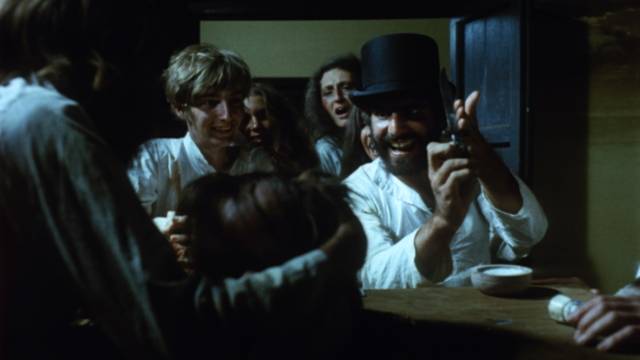
The presence of Faithful is one of the film’s appeals; another is MacKerrell in the role of Duller. Here, in his only performance in a feature, he’s very good, so it seems puzzling that he didn’t have more of a career. The explanation may be found in the fact that MacKerrell was the model for Richard Grant’s character in Bruce Robinson’s Withnail & I (1987), a manically self-destructive would-be actor, talented but without discipline. Ghost Story displays the talent, the lack of other appearances except for a handful of small supporting roles on television seems to confirm the lack of discipline.
Although not pristine, the hi-def transfer on the Nucleus Blu-ray improves on their 2009 DVD in detail and colour. The new edition contains all the extras from the two-disk special edition – commentary, feature-length documentary, seven short films and a commercial by Weeks (missing are several text extras included in a booklet and PDFs) – with the addition of several more commercials, a reel of test footage for what would become Weeks’ second feature, Gawain and the Green Knight (1973), plus thirty-four minutes of footage from what would have been Weeks’ biggest movie, The Bengal Lancers (1984), starring Michael York, Christopher Lee, Trevor Howard and others, which was sabotaged by crooked producers who scuttled the production in an attempted insurance scam.
*
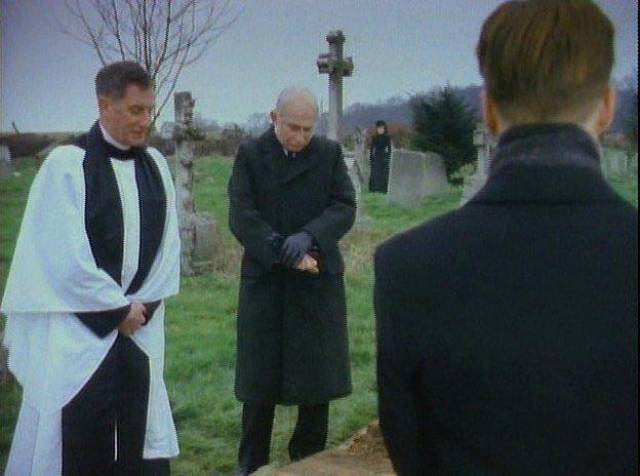
in Herbert Wise’s The Woman in Black (1989)
The Woman in Black (Herbert Wise, 1989)
When Hammer Films was revived in 2008, the company’s output was fairly sparse. For their fifth feature, they produced an adaptation of Susan Hill’s 1983 novel The Woman in Black (2012), starring Daniel Radcliffe in his first adult role after graduating from Hogwarts. Arthur Kipps, a young Edwardian solicitor, was a bit of a stretch; at twenty-three, Radcliffe had to play a man still mourning the wife who had died in childbirth four years earlier, leaving him to raise a young son while his nascent career is beginning to fail under the emotional strain. Being sent to a small village on the coast to wrap up a recently deceased old lady’s affairs is his last chance to save his job. Things don’t go well when he encounters hostility from the villagers and a malevolent ghost haunting the old woman’s house. Director James Watkins ramps up the atmosphere with gloomy production design and CG-enhanced spectres, wrapping the finale up in redemptive sentimentality. (I prefer the relentless modern horrors of Watkins’ first feature, Eden Lake [2008].)
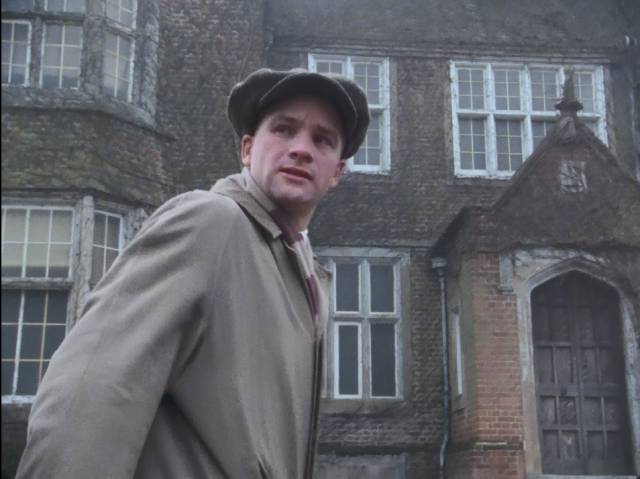
Made in 1989 for British independent television, Herbert Wise’s The Woman in Black is both less elaborate and more effective, benefiting from an excellent script by Nigel Kneale and a greater reliance on suggestion rather than overly explicit shocks. Wise is probably best known as the director of the BBC’s I, Claudius series (1976), which was a literate showcase for a cast of great actors. In contrast to that studio-bound series, The Woman in Black is genuinely cinematic, shot on location and at Lee International Studios. The locations at Lacock in Wiltshire and Maldon on the coast of Essex had retained their period appearance, giving the film a richly detailed look and bleak atmosphere.
There are differences between Kneale’s adaptation and the later Hammer film; here, Arthur Kidd (Adrian Rawlins) is happily married with two children (Kneale changed the character’s name because he was annoyed by Hill’s appropriation of the name of the protagonist of H.G. Wells’ social comedy Kipps: The Story of a Simple Soul [1905]). His employer is critical of his decision to start a family at such a young age before having firmly established his career. The boss gives him the task of wrapping up the estate of old Mrs. Drablow as a kind of test of his dedication – although it becomes clear that the boss himself is afraid to travel to Eel Marsh House for some reason.
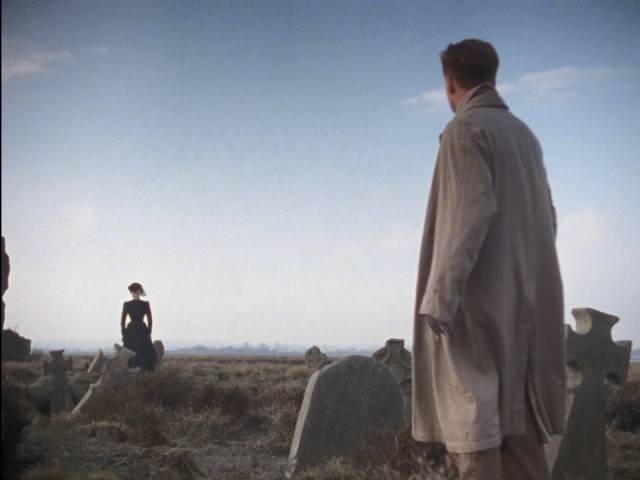
When Arthur arrives in the village he gets a cool response from the locals. They exchange uneasy looks and are reluctant to speak about the house and its former resident. When he goes to the house – reachable only twice a day at low tide – he is spooked by the appearance of a woman dressed entirely in black, standing still out in the overgrown graveyard behind the house. When he mentions her in the village, no one wants to speak of her. As Arthur goes through Mrs. Drablow’s effects, he comes across a machine for recording on wax cylinders and hears the old woman talking about the figure who haunts her.
The woman in black turns out to have been her sister Jennet (Pauline Moran), who had had a son out of wedlock. Mrs. Drablow and her husband adopted the boy to save the family honour, and Jennet had come to take him back, her cart plunging off the narrow causeway into the marsh as she tried to escape. In the fog, Arthur repeatedly hears the accident and the boy calling for his mother, while in the house, the boy’s spirit teases him playfully and the angry Jennet attacks him. Her madness at having lost her son drives her spirit to cause the deaths of village children, most families having been touched by her murderous fury, hence their hostility towards Arthur as he seems to be stirring things up with his presence at the house.
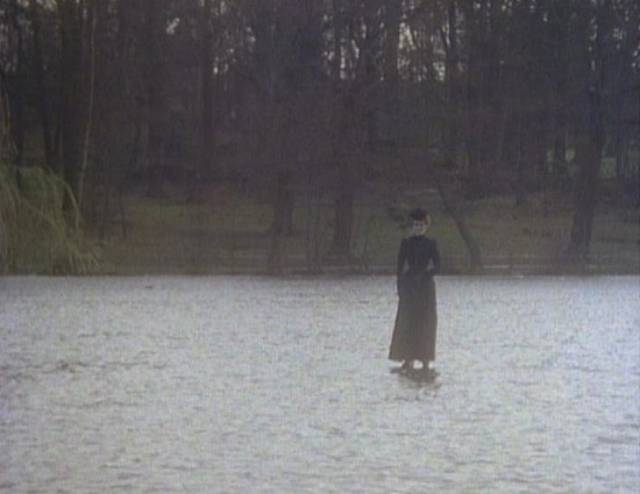
The locations keep the narrative grounded in mundane reality, while an excellent cast of British character actors provide an authentic period flavour into which the occasional silent appearances of the spectral Jennet intrude with chilling understatement. As in M.R. James’ stories, all it takes is a slight suggestion of the supernatural to up-end the comfortable complacency of the English with their certainty about the world and their place in it.
Network’s transfer was mastered from “original film elements”, though it’s not specified whether the source was the camera negative or a print. Either way, the image has an authentic film-like texture, with the 16mm grain pleasingly rendered, adding to the air of damp gloom. Produced before widescreen televisions were invented, the film used the 1.33:1 aspect ratio. The disk offers this, but also an alternate version cropped to 1.78:1, which would seem to be a controversial decision. I’m not sure whether the film was intended for overseas theatrical release, but the wider frame does feel very comfortable as if the photography was composed for both options. Extras are limited to a commentary from Kim Newman and Andy Nyman and a booklet with notes by Andrew Pixley.
While I enjoyed all these movies for their own intrinsic qualities, Wise’s The Woman in Black most closely appeals to my personal taste for traditional horror.
_______________________________________________________________
(1.) Luckily not severe – it struck me just after I got to work at 7:00 AM on a Thursday morning; at 9:00 the following morning I was getting an angiogram, during which one stent was installed to open up a partially blocked artery; and I was home by 11:00 on Saturday. It made me really glad that I live in Manitoba … great service from the staff in three separate units in two different hospitals, plus a couple of ambulance rides, and it didn’t cost me a penny. (return)
Comments